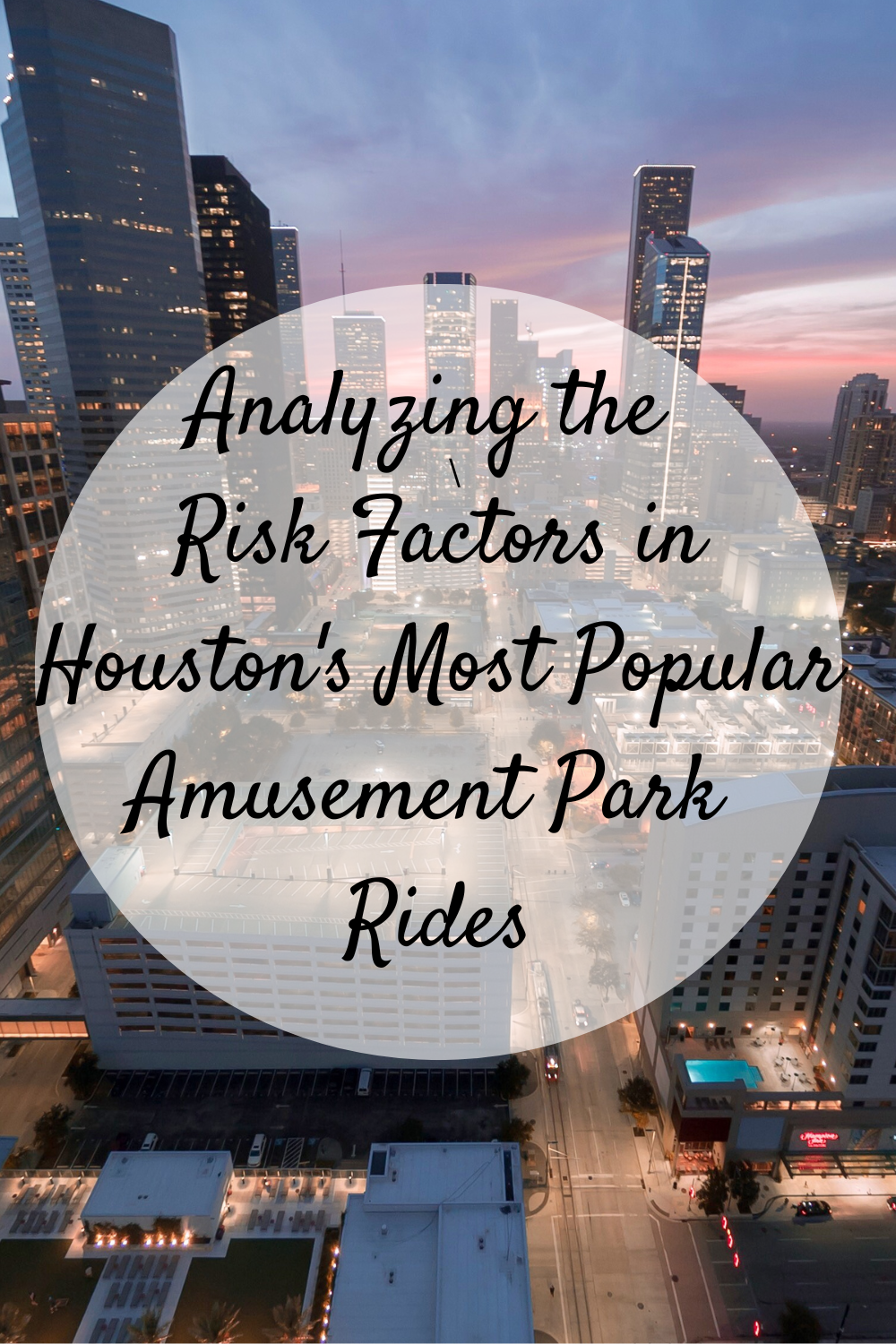

Amusement parks are a popular attraction in Houston, drawing millions of visitors each year. These parks offer thrilling rides and unforgettable experiences, providing entertainment for families, friends, and thrill-seekers. However, alongside the excitement and fun, there are inherent risks associated with amusement park rides. Ensuring the safety of visitors and preventing accidents requires a thorough understanding and analysis of these risks.
This article delves into the various risk factors present in Houston’s most popular amusement park rides and explores strategies to mitigate these risks. By examining mechanical failures, operator errors, design flaws, and environmental factors, we can identify potential hazards and implement measures to enhance safety. Understanding these risks and how to manage them is crucial for maintaining a safe and enjoyable environment for all amusement park visitors.
Mechanical failures are one of the primary risk factors in amusement park rides. These failures can result from poor maintenance, manufacturing defects, or wear and tear over time. Regular inspections and rigorous maintenance schedules are essential to identify and address potential mechanical issues before they lead to accidents.
To mitigate the risk of mechanical failures, amusement parks should implement comprehensive maintenance programs that include daily inspections, routine servicing, and immediate repairs of any identified issues. Additionally, using high-quality parts and components from reputable manufacturers can reduce the likelihood of mechanical failures.
Operator error is another significant risk factor in amusement park rides. Inadequate training, lack of experience, and lapses in attention can lead to improper operation of rides, increasing the risk of accidents. Ensuring that ride operators are well-trained and remain vigilant while on duty is critical to maintaining safety.
Amusement parks should invest in extensive training programs for their ride operators, covering all aspects of ride operation, emergency procedures, and safety protocols. Continuous education and regular performance evaluations can help maintain high standards of operation and reduce the risk of operator error.
Design flaws in amusement park rides can pose serious safety hazards. These flaws can result from errors in the initial design, poor engineering, or insufficient testing. Thorough testing and evaluation of rides before they are opened to the public are crucial to identifying and correcting design flaws.
To address design flaws, amusement parks should collaborate with experienced engineers and safety experts during the design and construction phases. Implementing rigorous testing protocols, including simulations and real-world trials, can help identify and rectify potential design issues, ensuring the rides meet safety standards before being made available to visitors.
Environmental factors can significantly impact the safety of amusement park rides. Key environmental factors to consider include:
Visitor behavior is a variable risk factor that can impact the safety of amusement park rides. Actions such as not following safety instructions, tampering with safety restraints, or engaging in reckless behavior can increase the risk of accidents. Educating visitors about proper ride conduct and enforcing rules is vital for ensuring safety.
Clear signage, safety briefings before rides, and vigilant monitoring by park staff can help manage visitor behavior. Amusement parks should also have policies in place for dealing with non-compliant visitors to ensure that safety is not compromised for others.
Certain amusement park rides can pose health risks to individuals with specific medical conditions. High-speed rides, for example, can affect those with heart conditions, back problems, or other health issues. Providing clear health warnings and guidelines can help prevent medical emergencies.
Amusement parks should ensure that health warnings are prominently displayed and that ride operators are trained to identify and assist visitors who may be at risk. Having medical staff on-site to respond to emergencies promptly can also enhance overall safety.
Effective emergency response preparedness is critical for minimizing the impact of any accidents that occur. Having a well-trained emergency response team and clear procedures for dealing with emergencies can save lives and reduce the severity of injuries.
Amusement parks should conduct regular emergency drills and review their response plans to ensure they are up-to-date and effective. Coordination with local emergency services, such as fire departments and medical teams, is also essential for a swift and effective response to any incidents.
Technological innovations are increasingly playing a crucial role in enhancing the safety of amusement park rides. Advanced monitoring systems, such as real-time diagnostics and automated safety checks, can detect potential issues before they lead to accidents. These technologies provide continuous oversight and can alert operators to irregularities that need immediate attention.
Virtual reality (VR) and augmented reality (AR) are also being used to simulate ride experiences for training purposes. These simulations help operators and maintenance staff understand the dynamics of rides and prepare for potential emergencies. By incorporating these technological advancements, amusement parks can significantly improve their safety protocols and reduce the risk of accidents.
Compliance with legal and regulatory standards is essential for maintaining the safety of amusement park rides. Federal and state regulations mandate specific safety requirements that must be met to ensure the well-being of visitors. Regular audits and inspections by regulatory bodies help identify compliance gaps and enforce adherence to safety standards.
Amusement parks should stay updated on the latest regulations and ensure that all safety protocols align with legal requirements. This includes proper documentation of maintenance activities, regular safety audits, and immediate corrective actions for any identified issues. Adhering to these standards not only enhances safety but also protects parks from legal liabilities and potential lawsuits.
If you've ever mailed a check, you know the routine. Envelope. Stamp. Send it and…
Each time a smartphone upgrade cycle completes or a computer reaches the end of its…
If you know anything about Minecraft, you are aware of its popularity among video games…
Spring is here, the weather is getting warmer and we’re just a handful of weeks…
What if the secret to lasting health isn’t just in prescriptions, but in the way…
What transforms a house into a home that truly reflects your personality, lifestyle, and aspirations?…
This website uses cookies.